While it may look any different from the outside, the MY2025 RockShox Lyrik Ultimate welcomes a host of internal updates to improve its performance and user-friendly experience. With an expanded remit of adjustment, it’s set to please a greater range of riders looking for one of the best mountain bike forks for all-mountain and aggressive trail riding.
- 9 tips to keep your suspension running sweeter for longer
- RockShox fork range 2024 - your guide to all the models, details and specs
- Is big travel necessary for UK trails?
RockShox Lyrik Ultimate fork - Technical details
Back in 2022, RockShox unveiled its Charger 3 damper that ushered in a host of technologies such as Buttercups and new compression circuits that claimed to eradicate ‘cross-talk’ between the two. For 2025, the suspension giant has proven that it’s determined to improve its products and as such, it has taken its damper back to the drawing board, gracing it with a host of tweaks that culminate to bring big improvements. Although a few features remain.
And the new Charger 3.1 RC2 damper is where a large number of the changes are found. As before, the brand has built in its cross-talk free compression circuits, so clicks of low-speed compression shouldn’t interfere with the chosen high-speed compression settings, and vice versa. However, to introduce more control and adjustment to the system, these circuits have been tweaked to achieve 68 per cent more oil flow.
RockShox says that this increase in oil flow reduces the damping when the low-speed compression circuit is completely open. So the fork will be easier to compress in areas where the fork will compress slowly. The brand has then fitted a larger high-speed compression pyramid to provide more damping when the high-speed compression circuit is closed.
The result is a pair of compression circuits that provide less damping when open, and more damping when closed compared to the current Charger 3 damper. Compression damping is then further reduced thanks to an updated mid-valve check spring.
These changes then mean that a new Internal Floating Piston (or IFP) has had to appear. The Charger 3.1 employs a stiffer coil spring to match the new increased oil flow. RockShox says that this improves consistency and control in the system.
All of these small tweaks that form the Charger 3.1 come as an answer to calls from the brand’s professional athletes asking for more high-speed compression damping for more support, and those who want more traction and the ability to better silence trail chatter.
The new line of forks also welcomes a refined bushing design. Charger 3 came with larger bushings installed to reduce friction but off the back of the launch of the BoXXer downhill fork, the new Lyrik has received a similar package. The change here is pretty simple as the brand has revisited its bushing sizes, tolerances, and lower leg reaming to reduce friction and the fork’s overall system damping.
As with the previous iteration of the Lyrik, the 2025 model is equipped with ButterCups. These are a pair of small containers that house two rubber pucks each with a metal plate between the two. They’re then attached to the lower end of the damper and air spring. With the two sides combined, ButterCups work to minimise harsh trail chatter by providing small movements before the fork breaks into its travel – providing 4mm of vertical compliance.
Then built into its 35mm chassis, the Lyrik benefits from a DebonAir+ air spring which remains unchanged for 2025. This spring has an aluminium piston that is thinner and as strong as plastic. It’s designed to feel plush at the start of the stroke while maintaining a higher ride height for more confidence and support when descending.
All of these fork updates are then complimented by a new version of RockShox’s Trailhead app which amongst other handy things, provides a useful library for fork setup as well as a new journal, so you can track your settings changes without getting lost.
The weight of this 160mm travelled Lyrik Ultimate on test with an uncut steerer and no crown race comes in at 2,023g which is five grams lighter than claimed but around 100g weightier than Fox claims its most recent 36 Factory GRIP X2 to weigh.
For those running RockShox suspension equipped with the Charger 3, the Charger 3.1 is available as an aftermarket upgrade. A nice touch is that RockShox offers Shim Tune Kits that offer even more adjustability, with two compression and three rebound tunes to pick from. Off-the-shelf shim-kits adjust the base settings of the fork so that lighter or heavier riders can get their fork dialled easily.
Finally, the Lyrik is available in Ultimate (tested) and Select models aftermarket with options for 140-, 150- or 160mm of travel, 37 and 44mm offsets, and in 650b and 29-inch sizes. The fork also uses a new design lower leg bleed valve that turns on a thread to release the air trapped in the fork lowers, rather than using a button as seen before.
RockShox Lyrik Ultimate fork - Performance
The Lyrik’s newfound adjustability is perhaps the most stark of the improvements. Setting up the fork requires the usual affair. RockShox has kept the super-useful markers on the compression dials which make it incredibly tough to lose your place. They are such simple additions that it’s amazing why it’s not standard on suspension components across all brands.
What’s great to see is that the brand’s promises to broaden the range of compression damping that the Lyrik and Charger 3.1 provides are far from hollow as I’ve found myself winding on more clicks of both low and high-speed rebound to achieve the level of damping and support I prefer. When testing the ZEB with the Charger 3 damper, I found it over-damped and ran minimal compression damping to suit. That’s in contrast to the 2025 Lyrik, where I’m running both circuits halfway into their respective rotations.
As for rebound, that circuit’s been mostly unchanged which can be seen as both a positive and negative. For some, it may be overdamped with those folk left wanting a faster setting but the majority should be happy with what the Lyrik has to offer out of the box. If you are among the camp that wants less damping, or even more, RockShox’s new Shim Kits should see to that issue so hopefully, all bases are covered.
Regardless, each click makes a tangible difference even more so than before, thanks to the increased range of damping on offer. And, because of this, the Lyrik is more likely to fit a rider’s needs better straight out of the box.
Something that hasn’t been addressed is its air spring. It’s the same DebonAir+ unit as seen on the previous model and for the most part, that’s no bad thing. It’s smooth but keeps the fork up in its travel when weighted. Through heavier and chunkier terrain it keeps a little bit of travel in the bank as a get-out-of-jail-free card, but it also keeps the bike in a more stable and balanced position in its dynamic geometry through a healthy helping of mid-stroke support.
This is done through the air spring’s progression though, and progressive it is. I began my test with a single Bottomless Token installed, the same as my Fox 36 and struggled to reach bottom out, even on heavier hits. Removing the token opened up more travel and helped better smoothen the ride. For riders who are lighter, or don’t ride as hard (not that I ride hard) you may find yourself looking to reduce the progression, and to do so, you’ll need to consider aftermarket products such as TruTune’s fork insert because as it stands, there’s not much from RockShox to help on the progression front.
However, on the trail, performance is stellar. It's supple and supportive as it gets deeper into the stroke. As the fork breaks into its travel, it makes easy work of low-level chatter as it confidently dulls down low-level trail interference. The previous iteration did a good job of ironing out such imperfections but with its more slippery bushing design, smoothness is clearly boosted throughout the whole of the fork’s travel.
ButterCups have a role to play in the fork’s performance in this area. According to RockShox, they absorb such a small part of initial movement that it’s tough to discern whether they’re doing anything compared to forks that don’t run ButterCups. The Lyrik’s ability to cope with trail chatter is sublime, nonetheless, and that’s helped me push the fork harder and ride with more confidence, thanks to the vibration damping provided.
Despite being another unchanged aspect of the new Lyrik, the chassis is also good. Although it's a 35mm chassis, unlike the 36mm build of the competing Fox 36, stiffness is plentiful and I’ve not found myself cursing any excess flex. Steering is marginally less direct than the ZEB, understandably but weighing less, the Lyrik commendably balances stiffness with weight savings and confidently fills its role within RockShox's fork range.
RockShox Lyrik Ultimate fork - Verdict
This iteration of the RockShox Lyrik Ultimate comes with an RRP of £1,079 which is a considerable saving when compared to the latest Fox 36 Factory GRIP X2. Of course, the 36 comes with Fox’s technologies but importantly, it’s claimed to be 100g lighter and comes with a low-speed rebound adjustment. As much as I like Fox’s suspension forks, the extra £270 will need more justification. The overall price for that fork is £1,349.
If we dial things back a notch and take a look at Fox’s 36 Factory with a GRIP X damper things get slightly more interesting. It’s claimed to be lighter again at around 1,809g due to weight savings in the GRIP X damper and it loses the low-speed rebound adjustment, coming with the same adjustments as the Lyrik. The GRIP X Fox 36 Factory will set you back £1,259 so still, the Lyrik is looking like rather good value and even more so when compared with the £1,119 Performance Elite model.
However, what’s well worth mentioning is that the Fox forks only come in 150- and 160mm travel options, whereas the Lyrik can be had in 140mm, too.
The fork in the Lyrik’s firing line is the Mezzer Pro from Manitou. You would have to get over the reward arch design but Manitou’s offering comes with a little more in the adjustment department as its progression can be tuned semi-on-the-fly using a shock pump. It is a little heavier though at 2,100g and its compression circuits aren’t as well refined as those found on the Charger 3.1 damper.
The new RockShox Lyrik improves on its already solid foundations and the Charger 3.1 RC2 damper and new bushing package helps it stack up against its closest competitors in terms of sheer performance. Although the fork is nothing short of excellent, it's not the lightest in the segment and a reduction in progression would open up even more room for adjustment. It's priced lower than similar forks from other brands and that will make it stand out.










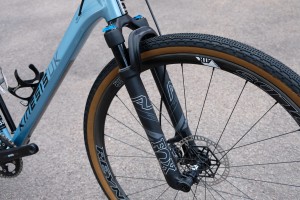

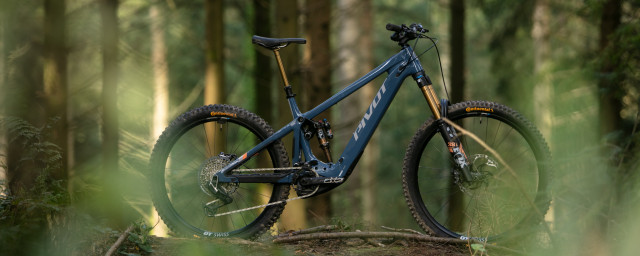
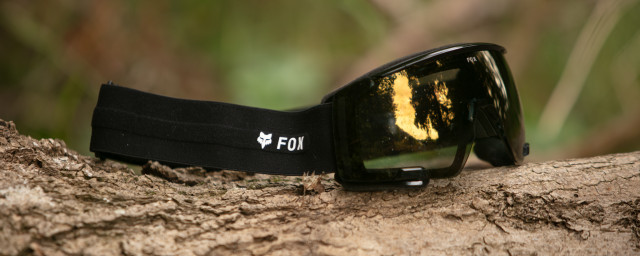
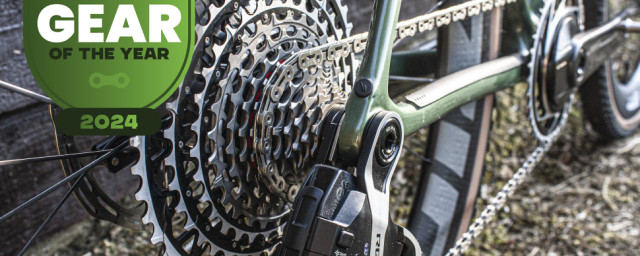


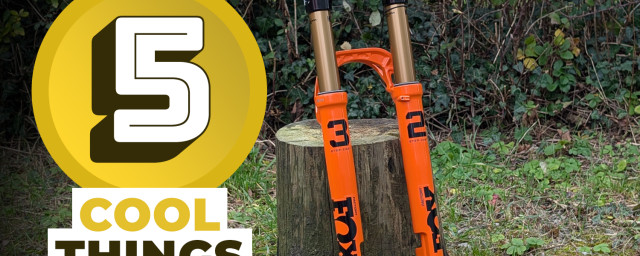
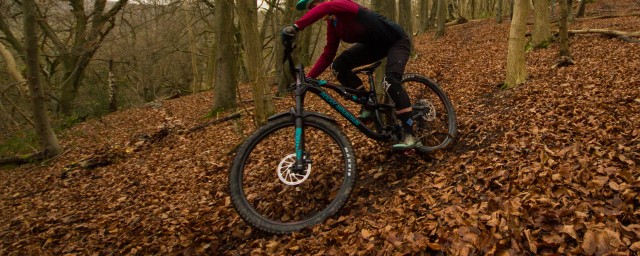

Add comment